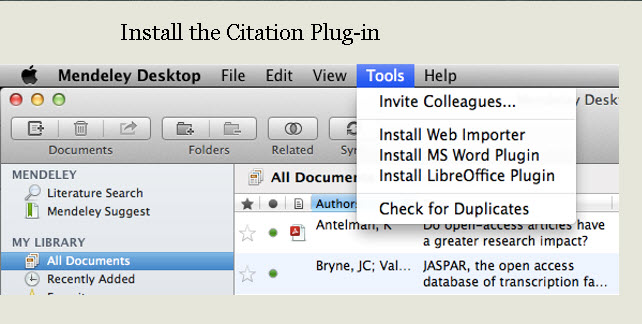

In the Add-ins box, identify the add-in that you want to enable or disable and note the add-in type located in the Type column.
#DO ADD INS IN WORD FOR MAC CODE#
Regarding performance, Microsoft says the first launch of each Office app will take longer as Rosetta 2 has to first generate optimised code for the new processor - but subsequent app launches will be ‘fast’. Click the Microsoft Office Button, click Word Options, and then click Add-Ins. If the add-in is not in the list, go to 'disabled Items' as shown below to see if Templafy is listed there. There’s no difference in installation or deployment methods, too. If the add-in is not enabled, please do so by clicking on the checkbox. Microsoft also says all Office features - even third-party add-ins - on Intel-based Macs will run on the M1 Macs, thanks to Apple’s Rosetta 2 translation layer. Power Query is not yet available for the Mac versions of Excel. Built-in feature for Excel 2016 for Windows (Office 365 Subscription). Microsoft recommends the November 2020 release (build 16.43) for the ‘best experience’ because this version of Office packs the latest optimisations for the just-released macOS Big Sur. Notes: If the Solver Add-in is not listed in the Add-Ins available box, click Browse to locate the add-in. In a nutshell, the latest release of Word, Excel, PowerPoint, Outlook, OneNote and OneDrive will all work on the new M1-based Macs.

If you’re going to buy or have already placed an order for one of Apple’s new Macs with the M1 chip and are wondering how it’d handle that Microsoft Office productivity suite that you so can’t do without, well, Microsoft has released a fairly succinct FAQ regarding compatibility. Don’t worry, your Microsoft Office apps will run fine on the new Macs powered by the M1 processor


 0 kommentar(er)
0 kommentar(er)
